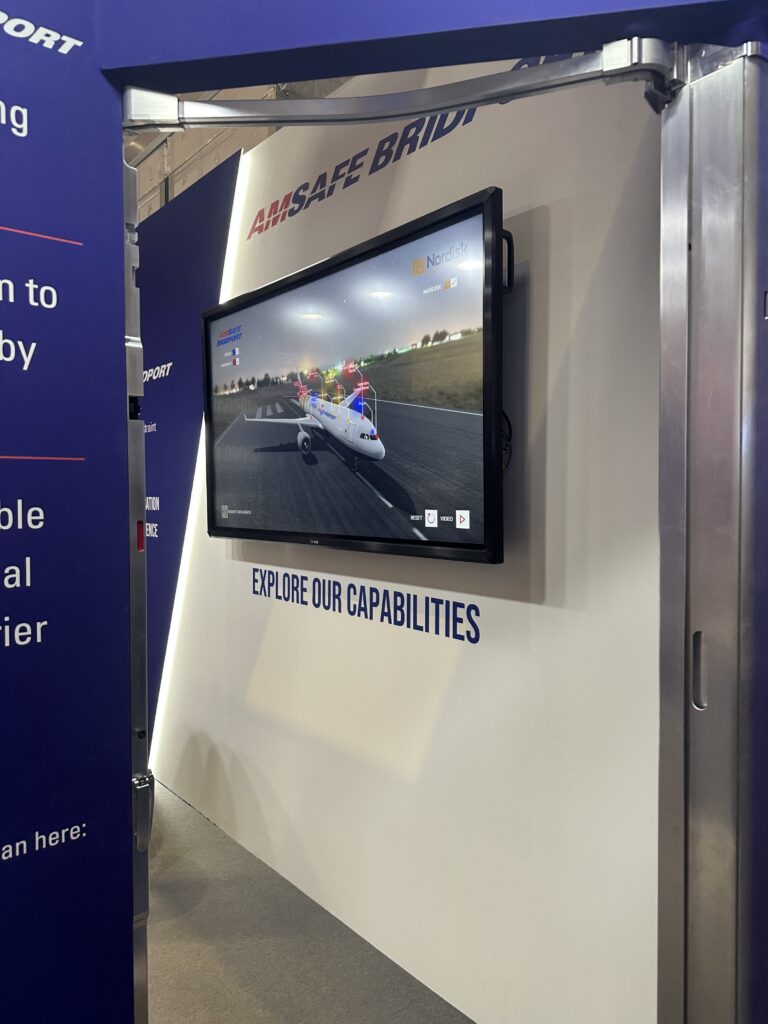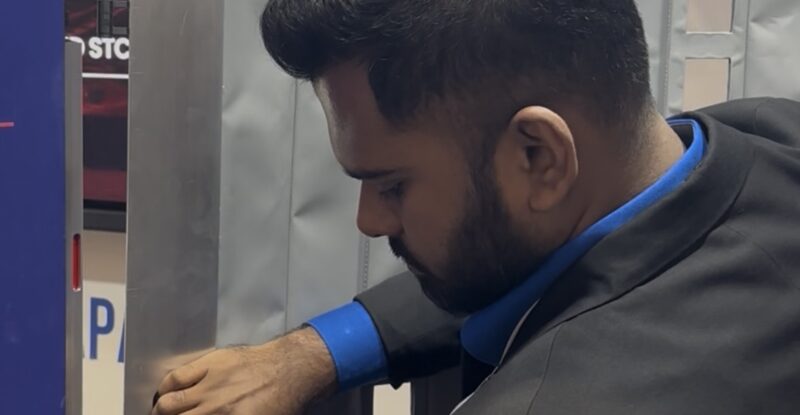In August, any new commercial aircraft operated by scheduled airlines in the United States must have a secondary barrier installed between the cabin and cockpit. To meet this new security standard, AmSafe Bridport has developed a new Installed Physical Secondary Barrier (IPSB) for all commercial aircraft operating under Part 121 rules in the USA.
The Bridport, UK-based firm, which specializes in meeting the safety and securement needs of the global aerospace and defense markets, showcased its IPSB solution — a folding textile door system — during the Aircraft Interiors Expo in Hamburg.
This addresses “a crucial gap in the cockpit security, when the pilots have to come out or for meal service. At the moment, the crew actually use themselves or the trolley to provide that additional layer of protection, but this is a much safer solution for the crew, obviously,” AmSafe Bridport programme manager Rishani Dissanayake told RGN.
The IPSB is billed as a “cut resistant” solution. “Even though it’s flexible and lightweight we’ve tested it with sharp knives and scissors; these are not standard onboard equipment, but we’ve taken into account a worst-case condition if someone sneaks it on board,” Dissanayake said in reference to meeting the specific perforation and penetration requirements of the new law. “We’ve also done reach-over tests while the curtain is closed to see if you can reach the cockpit door. You can’t.”
AmSafe Bridport’s product is designed to facilitate a US FAA-required five-second deployment window to allow the captain or crew to safely transition from the cockpit while the barrier is in place, as staffers demonstrated during the show.
Certification testing continues this month with both the FAA and Transport Canada as witnesses, and this includes forcible-entry testing to ensure a potential assailant cannot barge through the IPSB. AmSafe Bridport is confident it will pass muster; a 600lb intrusion load rating will ensure the barrier can withstand significant force.
Dissanayake noted: “We’ve had someone stab it with full force, tested different parts of the curtain and we know that this product works. We expect to have this product fully tested and certified by August 2025.”
It is, however, difficult to see how US airlines will meet the US government’s August deadline.
Existing aircraft are also ultimately expected to be retrofitted with IPSBs, under the FAA Reauthorization Act of 2024.
 AmSafe Bridport’s IPSB features a robust metal frame combined with advanced fabric technology and a brushed aluminum finish. In its stored condition, the kit neatly tucks away, and blends in with the rest of the aircraft.
AmSafe Bridport’s IPSB features a robust metal frame combined with advanced fabric technology and a brushed aluminum finish. In its stored condition, the kit neatly tucks away, and blends in with the rest of the aircraft.
“It’s not taking up too much space because obviously emergency evacuation is a very strict requirement so there is an aisle width requirement that we have to meet and we’re not going too much into the aisle,” Dissanayake explained.
The firm has publicized it is providing the linefit IPSB for all new Airbus A220 twinjets. Having fielded a lot of interest in retrofits, it intends to offer a retrofit-ready solution to airlines.
It is not the only company offering an IPSB for commercial aircraft. Arnsberg, Germany-headquartered SCHROTH Safety Products Gmbh last year at AIX revealed its IPSB which will be line-fitted by Airbus to every A320, A330 and A350 series aircraft headed to the US.
The advantage of AmSafe Bridport’s solution, said Dissanayake, is that it’s “more of a compact, lightweight and flexible design. When it’s stored away you don’t really see that anything’s in place. But even when it’s deployed, it’s taking up much less space. That is the advantage of our solution.”
Related Articles:












